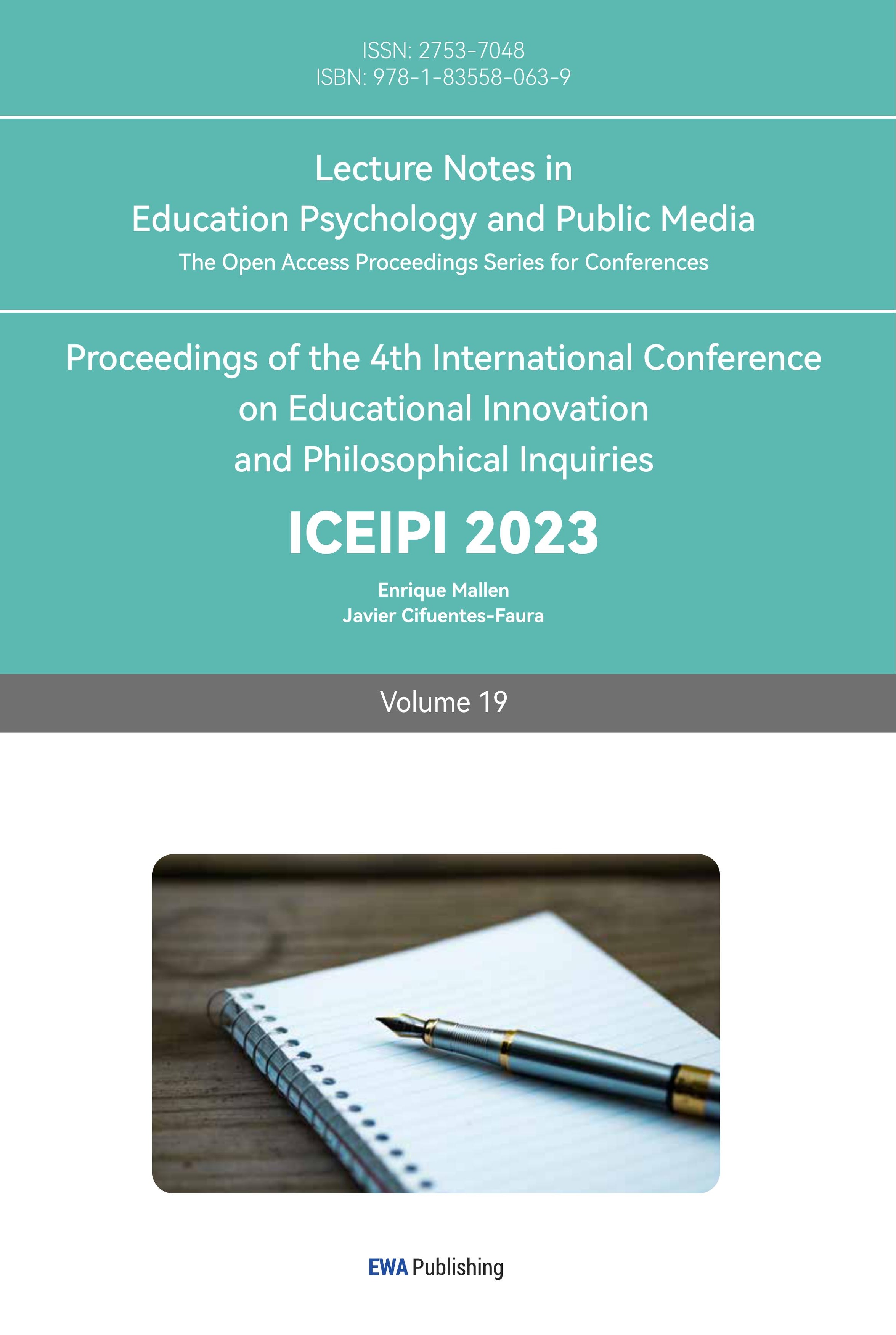1. Introduction
Gender equality is an index to measure the development of a society. All over the world, some governments have done progress of gender equality. In Sweden, women’s representation in the lower house of their parliament has an approval rate above 40 percent [1]. However, there still exists some problems. In a small Islamic state, men’s growth rate of employment of men is nearly four times bigger than women’s in 1998 [2]. Besides, although a woman spends the same amount of time on a salary compared to her husband, she does more housework and spends more time on caring children than her husband [3]. Nowadays, unlike using traditional medias such as books and newspapers, people have new method to learn about gender equality. Social platform has become an important source for people to learn about gender equality. According to one research, 96.15% per cent of the interviewees hear about relevant information about gender equality on social platform [4].
In the research of this paper, the authors set up a hypothesis that men and women do have different opinions on gender equality on a same social platform. In order to verify this hypothesis, the authors organize a questionnaire to investigate the differences between male and female mindset of gender equality on social platforms, and also analyze the connection which link the proportion of males and females on social platforms with this mindset. The questionnaire is based on two topics which are job discrimination and lifestyle during pregnancy. The writers set up a series of questions to collect men’s and women’s opinions on these two topics.
2. Method
The study mainly adopted a questionnaire method to collect data. All of the information in the questionnaire are definitely keep secrets and only be used in this study. When determining the stage of the subject, the researches randomly choose people that from different age group. The authors used WeChat group distribution and snowball techniques for spread the questionnaire. Total sample sizes of this study are seventy- eight participants with seventy-three percent of young people who are between fifteen and twenty-five years old and fifteen percent of people are between thirty to sixty years old. The gender ratio of men and women is sixty percent of female and thirty percent of male. In the study the experimental data on middle-aged and elderly adults is very scarce.
The questionnaire is divided into two parts. The first part focuses on the different treatments faced by different gender groups. The second part focuses on the women’s lifestyle during pregnancy. For the first part, the researchers organized two situational manner questions. In this type of question, the researchers list five variables which are sex, age, working experience, education background and whether ready to get married within five years. In the first situational question, sex is controlled to be different, and other variables are same. In the second question, whether ready to get married within five years is controlled to be different, and other variables are same. For the second part, the researchers also set up two questions. Both of the two questions are asking about the attitude of the lifestyle during pregnancy. While the first question is based on the general view from the software that the interviewee often uses, the second question is based on the interview’s personally favorable opinion. There are three variables, makeup, eating and dressing in each option. The first option is freedom of all variables, and the second option limits the degree of average time spend on these types of software, average used numbers of these types of software and rank the four recruiting requirements in order of importance.
3. Results
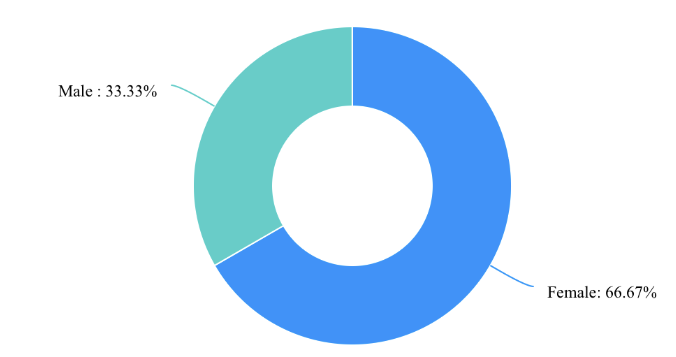
Figure 1: Total sample size. (Picture credit: Original).
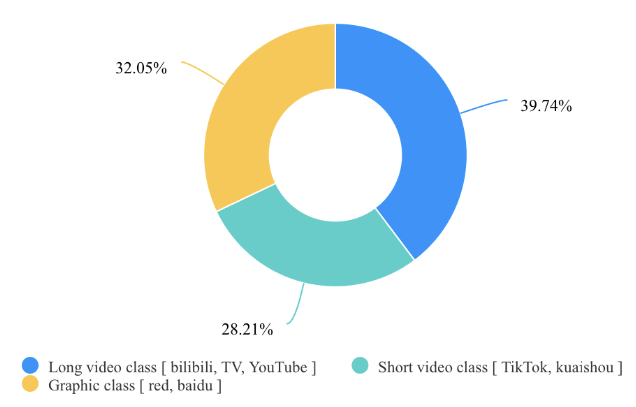
Figure 2: The number of using different types of software. (Picture credit: Original).
In this research the authors used the “snowball way” in WeChat groups to distribute the questionnaire. This research has collated seventy-eight subjects, including twenty- six males and fifty-two females (Figure 1).
For avoid homogeneous groups the authors are expanding the middle-aged and elderly groups into the total sample size. As Figure 2 shows, people are more likely to spending their time on “long video class” and “graphic class” is not popular enough in this sample group.

Figure 3: Average time of using software per day. (Picture credit: Original).
From Figure 3 there are more people spending one to two hours with the type of software that they choose. The logical answer to explain this is fifty percent of subjects in this study are high school students and college students, they don’t have much time to use phones and software.
Figure 4 shows the importance to hiring employees as employers. As subjects are chosen, they put “work experience” on preferred condition and “personal education” is the second highest priority. The authors believe that this result is because work experience can indicate whether the person is responsible, and whether the person is suitable for the position based on previous work conditions. From the level of personal education, it can reflect whether the candidate can use professional knowledge to solve problems that others cannot solve by experience. The research also shows the “ability to balance family and work” is equally important with age for thirty people. The most reason for that because the ability to balance family and work is dependent on person’s age and family situation. And author also finds people who use “long video class” software is more likely to put personal education as first priority, and people who use “graphic class” software tend to choose work experience firstly [5].
There are two situational questions for pretending subjects are employers to hire personnel. The first question is to compare two recent graduates of different genders, who have had two internships during university life and have no plans to marry in five years. More people have chosen the man for the position [6]. The incidental explanation for this is man can work longer than women. For instance, when they must to do extra work, man’s time are more flexible than women and the women’s emotions cannot be stable enough to handle some important issues in company during the menstrual period. The second question is to compare two women. The first is thirty-five years old, and after graduating from the master's degree, she has two years of work experience and has no plans to marry within five years. The second, 29 years old, has two and a half years of work-study work experience during her master's degree, and is now married and trying to get pregnant. More people choose first woman because she has no plan of baby stuff and more work experience so she can spend more time on work. However, some people choose second woman because they think second woman will have more responsible than first woman because second woman is already getting married and planning for having children, she will work hard for her own family [7].
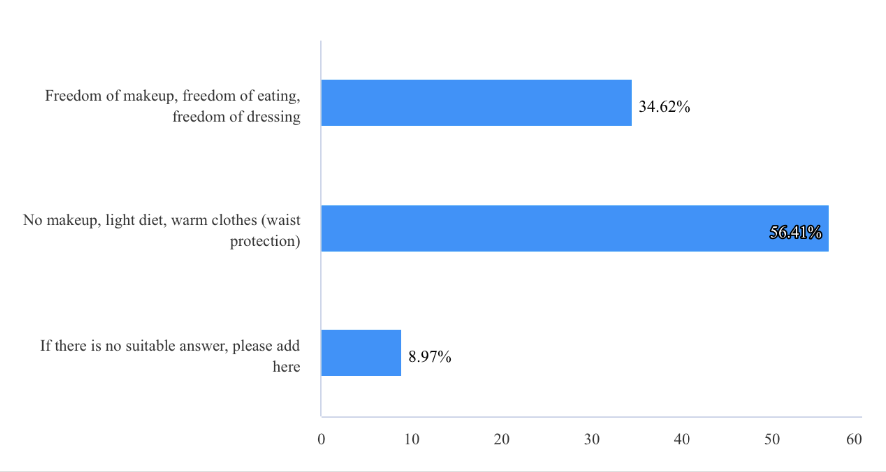
Figure 5: Online information about pregnancy lifestyles. (Picture credit: Original).
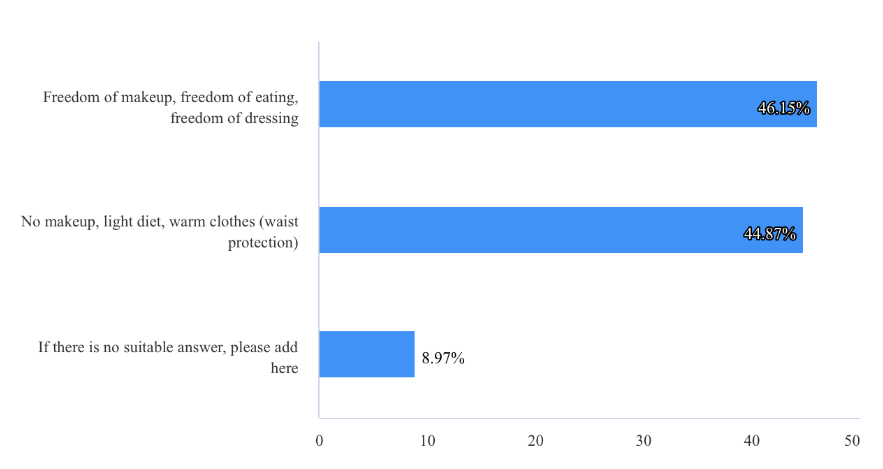
Figure 6: Personal opinion on pregnancy lifestyle. (Picture credit: Original).
As can be seen from the tables on lifestyle during pregnancy in Figure 5 and Figure 6, the authors make some comparisons between online information and real-world views. In online information, more information people receive is “no makeup, light diet, warm clothes” views [8]. In real life, more than half of people agree “freedom of makeup, freedom of eating, freedom of dressing”. However, there are still have different opinions for instance makeup is suitable when woman are already light diet and dress properly and women can do everything they want when they’re not going to hurt themselves and baby [9].
4. Discussion
According to Figure 4, most interviewees regard work experience and degree are more important than age and the ability to balance family and work when selecting the employees. Analyze from the interviewer’s perspective, the result is reasonable. An important and intuitive index to measure the value of employee is the ability. The ability contains two aspects, work experience and degree. Sufficient work experience means this employee has a good professional network because he is familiar with the people who work in this field. This can help him quickly get into the working place. A high degree indicates that this employee has professional knowledge and skills in the applied job. He can easily and effectively solve the problem and be proficient in using the required working tools. Therefore, most people would make work experience and degree a higher priority than age and the ability to balance work and family. However, there are also other factors which will influence the interviewer’s decision. According to one research, the degree that the interviews fit the local culture background is also considered to be a factor. A high culture fit person is more likely to be employed than a low culture fit person [10]. In another research, the result supports that the gender of the interviewer would also influence the performance of the candidates. When the interviewer is a female, the candidate is more likely to achieve a higher score in language test [11]. Besides, COC has formulated several policies to protect women’s right. Firstly, female employees shall not terminate the labor contract at will during pregnancy, perinatal period and lactation period. Secondly, women enjoy equal rights with men in employment. Thirdly, it is forbidden to arrange female employees to engage in specific labor. Fourthly, female employees are entitled to maternity allowance, maternity insurance.
5. Conclusions
In this research, the researchers find that men and female do have different views on gender equality. Some women call on giving women the same status as men in the workplace, politics and social status. Some men think that women have enough rights and men have more pressure because they are required to afford a family and contribute more to a society. There are some possible deficiencies in this research. Firstly, the reason why some men have conservative opinions on gender equality need to be explored more. Secondly, people might hide their true opinions when doing the questionnaire. Thirdly, some questions in the questionnaire don’t organize well so some replies do not collect the data the researchers want. Lastly, some factors which might affect the interviewer’s opinion are not being considered. In order to solve these three limitations, the researchers raise possible solutions. Firstly, the research can use the interview to learn more about the men who have conservative opinions on gender equality. After several interviews, the researchers can draw some of the same traits from the interviewees. Further study can be adopted to analyze the traits. Secondly, the questionnaire can set some repeated questions to better collect the effective data. Thirdly, some questions need to be given more freedom to the interviewees. More free response questions can be adopted.
Authors Contribution
All the authors contributed equally, and their names were listed in alphabetical order.
References
[1]. Rubio-Marin, R. (2014). The achievement of female suffrage in europe: on women's citizenship. Social Science Electronic Publishing, 12(1), 4-34. https://xueshu.baidu.com/usercenter/paper/show?paperid=96c07e7b879802747a570b4708dc8786&site=xueshu_se
[2]. El-Hamidi, F. (2008). Trade liberalization, gender segmentation, and wage discrimination: evidence from egypt. Economic Research Forum. https://xueshu.baidu.com/usercenter/paper/show?paperid=19260x40rg570xh0nr7a08j0mb580107&site=xueshu_se
[3]. Lorber, J. (2001). Gender inequality. Retrieved from lorber_feminisms_2010-libre.pdf (d1wqtxts1xzle7.cloudfront.net).
[4]. Fu, Y. (2022). Research on the Influences of Social Media to Gender Equality. Retrieved from Research on the Influences of Social Media to Gender Equality | SHS Web of Conferences (shs-conferences.org).
[5]. Bialy, B. (2017). Social Media—From Social Exchange to Battlefield. The Cyber Defense Review, 2(2), 69–90.http://www.jstor.org/stable/26267344
[6]. Beilenson, J. N. (2021). Nonverbal Overload: A Theoretical Argument for the Causes of Zoom Fatigue. Technology, Mind, and Behavior, 2(1).
[7]. Coelho, C., Tichon, J., Hine, T. J., Wallis, G., & Riva, G. (2006). Media presence and inner presence: the sense of presence in virtual reality technologies. From communication to presence: Cognition, emotions and culture towards the ultimate communicative experience, 11, 25-45. https://citeseerx.ist.psu.edu/document?repid=rep1&type=pdf&doi=91c7ce405eccda1b8cffe88059cf22cff4a65d8c
[8]. Zulli, D., & Zulli, D. J. (2020). Extending the Internet meme: Conceptualizing technological mimesis and imitation publics on the TikTok platform. New Media & Society, 24(8), 1872–1890.
[9]. IZEA Worldwide, Inc. (2020, February 11). 67% of Social Media Consumers Aspire to be Paid Social Media Influencers. AP NEWS. https://apnews.com/press-release/globe-newswire/business-media-social-media-39312e45ee2a748049cbd1ec4862b6e3%20
[10]. Bye, H. H. Horverak, J. G. , Sandal, G. M. , Sam, D. L. , & Vijver, F. J. V. D. . (2014). Cultural fit and ethnic background in the job interview. International Journal of Cross-Cultural Management, 14(1), 7-26. https://opentext.wsu.edu/psych105nusbaum/chapter/introduction-13/
[11]. O’Sullivan, B. (2000). Exploring gender and oral proficiency interview performance. System, 28(3), 373-386. https://www.shsconferences.org/articles/shsconf/abs/2022/18/shsconf_icprss2022_03026/shsconf_icprss2022_03026.html
Cite this article
Liu,S.;Gao,T. (2023). Different Perceptions of Same Issue by Different Genders on Same Social Media Platform. Lecture Notes in Education Psychology and Public Media,19,41-47.
Data availability
The datasets used and/or analyzed during the current study will be available from the authors upon reasonable request.
Disclaimer/Publisher's Note
The statements, opinions and data contained in all publications are solely those of the individual author(s) and contributor(s) and not of EWA Publishing and/or the editor(s). EWA Publishing and/or the editor(s) disclaim responsibility for any injury to people or property resulting from any ideas, methods, instructions or products referred to in the content.
About volume
Volume title: Proceedings of the 4th International Conference on Educational Innovation and Philosophical Inquiries
© 2024 by the author(s). Licensee EWA Publishing, Oxford, UK. This article is an open access article distributed under the terms and
conditions of the Creative Commons Attribution (CC BY) license. Authors who
publish this series agree to the following terms:
1. Authors retain copyright and grant the series right of first publication with the work simultaneously licensed under a Creative Commons
Attribution License that allows others to share the work with an acknowledgment of the work's authorship and initial publication in this
series.
2. Authors are able to enter into separate, additional contractual arrangements for the non-exclusive distribution of the series's published
version of the work (e.g., post it to an institutional repository or publish it in a book), with an acknowledgment of its initial
publication in this series.
3. Authors are permitted and encouraged to post their work online (e.g., in institutional repositories or on their website) prior to and
during the submission process, as it can lead to productive exchanges, as well as earlier and greater citation of published work (See
Open access policy for details).
References
[1]. Rubio-Marin, R. (2014). The achievement of female suffrage in europe: on women's citizenship. Social Science Electronic Publishing, 12(1), 4-34. https://xueshu.baidu.com/usercenter/paper/show?paperid=96c07e7b879802747a570b4708dc8786&site=xueshu_se
[2]. El-Hamidi, F. (2008). Trade liberalization, gender segmentation, and wage discrimination: evidence from egypt. Economic Research Forum. https://xueshu.baidu.com/usercenter/paper/show?paperid=19260x40rg570xh0nr7a08j0mb580107&site=xueshu_se
[3]. Lorber, J. (2001). Gender inequality. Retrieved from lorber_feminisms_2010-libre.pdf (d1wqtxts1xzle7.cloudfront.net).
[4]. Fu, Y. (2022). Research on the Influences of Social Media to Gender Equality. Retrieved from Research on the Influences of Social Media to Gender Equality | SHS Web of Conferences (shs-conferences.org).
[5]. Bialy, B. (2017). Social Media—From Social Exchange to Battlefield. The Cyber Defense Review, 2(2), 69–90.http://www.jstor.org/stable/26267344
[6]. Beilenson, J. N. (2021). Nonverbal Overload: A Theoretical Argument for the Causes of Zoom Fatigue. Technology, Mind, and Behavior, 2(1).
[7]. Coelho, C., Tichon, J., Hine, T. J., Wallis, G., & Riva, G. (2006). Media presence and inner presence: the sense of presence in virtual reality technologies. From communication to presence: Cognition, emotions and culture towards the ultimate communicative experience, 11, 25-45. https://citeseerx.ist.psu.edu/document?repid=rep1&type=pdf&doi=91c7ce405eccda1b8cffe88059cf22cff4a65d8c
[8]. Zulli, D., & Zulli, D. J. (2020). Extending the Internet meme: Conceptualizing technological mimesis and imitation publics on the TikTok platform. New Media & Society, 24(8), 1872–1890.
[9]. IZEA Worldwide, Inc. (2020, February 11). 67% of Social Media Consumers Aspire to be Paid Social Media Influencers. AP NEWS. https://apnews.com/press-release/globe-newswire/business-media-social-media-39312e45ee2a748049cbd1ec4862b6e3%20
[10]. Bye, H. H. Horverak, J. G. , Sandal, G. M. , Sam, D. L. , & Vijver, F. J. V. D. . (2014). Cultural fit and ethnic background in the job interview. International Journal of Cross-Cultural Management, 14(1), 7-26. https://opentext.wsu.edu/psych105nusbaum/chapter/introduction-13/
[11]. O’Sullivan, B. (2000). Exploring gender and oral proficiency interview performance. System, 28(3), 373-386. https://www.shsconferences.org/articles/shsconf/abs/2022/18/shsconf_icprss2022_03026/shsconf_icprss2022_03026.html





